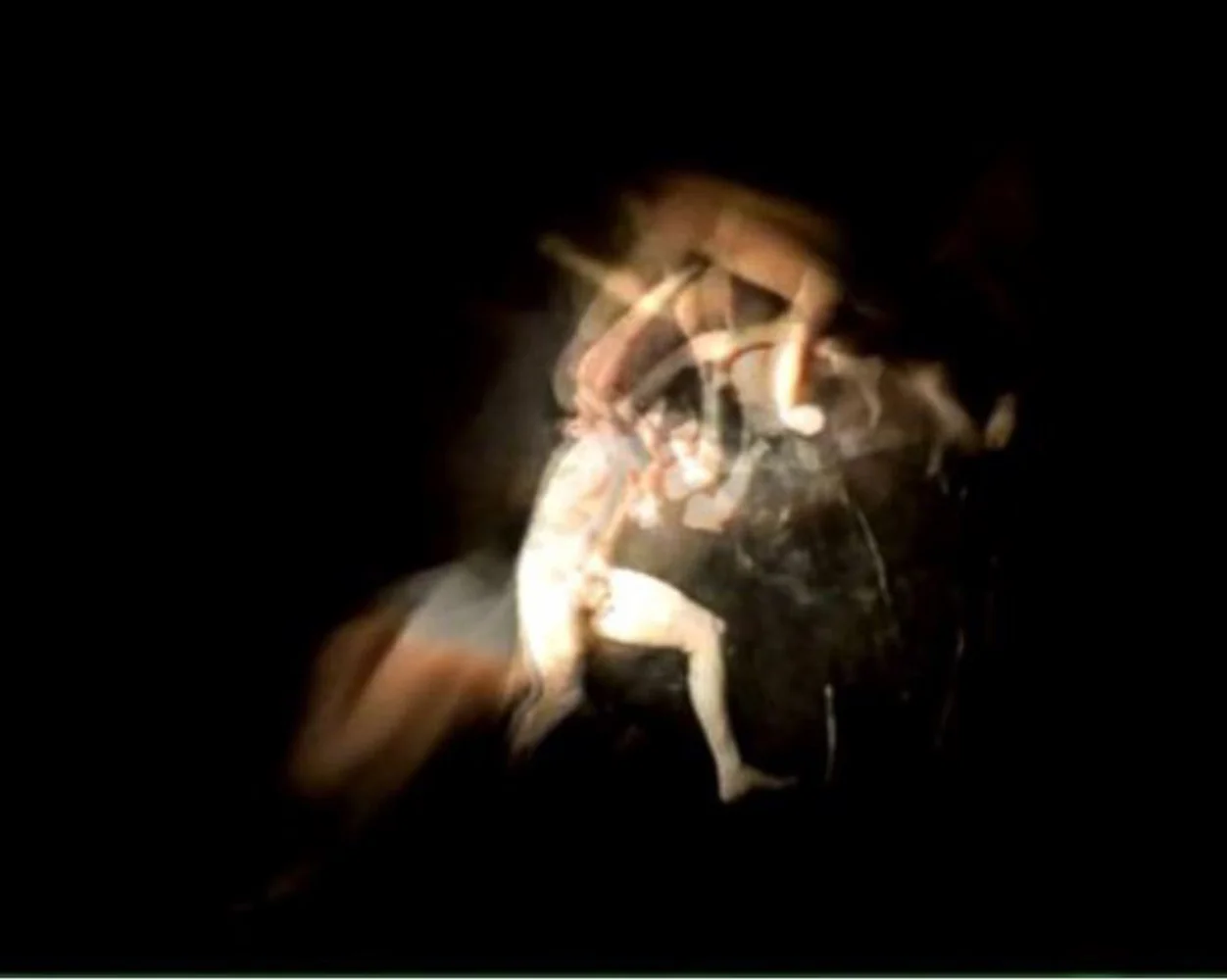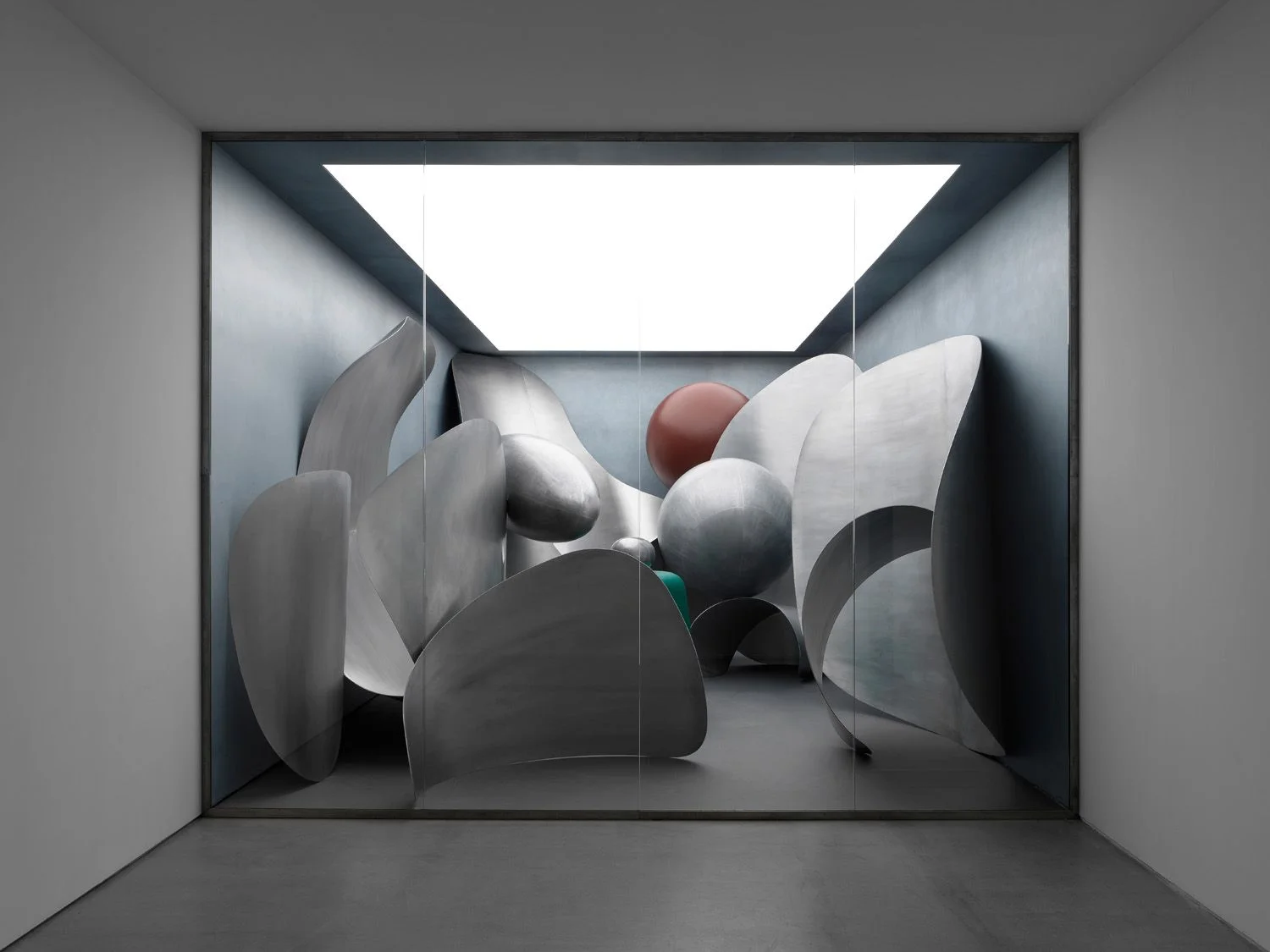Chinese Contemporary: Liu Wei Density, 2013
Density, 2013 works in serene opposition the the rapid urbanization of Beijing, and channels the soothing affections of minimalism and smooth solid forms. Liu Wei himself is an urban dweller of the high stimulus capital, and his work responds to the growing chaos. He takes a formulated and systematic approach, coupled with a near anarchist inner freedom, to forge a personal sense of order and meaning out of rigidly controlled social and political structures, that he has spent much of his career questioning. In Density, 2013 Wei further highlights the ephemeral and intangible nature of the digital age, responding to modern cravings for what is solid and tangible. Information is fast and uncertain on the internet, and Wei’s use of books instigate a psychosomatic patience, a welcoming, and encouragement to seek truth. Wei masterfully demonstrates the stark beauty of the simplicity of the everyday object reimagined. Wei is not concerned with the medium itself, but rather the interpretation of reality that is projected on objects of resonance. In the tightly stacked pages of the books we see the many that fill skyscrapers, in their imaginative forms, we see ourselves.
Liu Wei grew up in the “in between” generation, and this is reflected in his modern themes of productions, consumption, and material surplus. This was also a generation of rapid urbanization and constant construction developments, inspiring a deep interest in architecture’s role in society, and its reflection of the changes that occur. Wei presents the city as a dynamic and vital force, and thoughtfully questions contemporary urban life, and the ways in which we plan, build, consume and experience our modern cities. Wei works across a range of media and techniques, including photography, painting, sculpture, installation, and video. A pillar of Wei’s early career was his work with the Post-Sense Sensibility art collective, whose pop up exhibitions between 1999-2003, rejected the standard art show structure and rather let irrationality, improvisation, and intuition guide their exhibited experiences. The group shared a distaste for the political idealism and strict rationality of their predecessors, and this spontaneous yet context specific style is style deeply prevalent in Wei’s work today.
Liu Wei, Hard to Restrain, 1999
In 2003, Wei was selected by Hou Hanru to participate in the “official” (government sponsored) Fifth Shenzhen International Public Art Exhibition, "The Fifth System: Public Art in the Age of Post-Planning”. When plans for his installation work became logistically too difficult, Wei was devastated, and vowed a more pragmatic approach. Moving away from earlier styles of idealistic oil paintings, or surrealist video art such as Hard to Restrain, 1999, his work has since demonstrated concern with the objects that populate our daily lives and, by extension, with the systems that govern everyday existence. Since this shift to a more pragmatic artistic focus, Wei remains imaginative as ever, breathing new life into everyday objects, such as ceramics, books, televisions, fridges and fans. In re-working discarded materials, Wei transforms them into sculptures that are densely layered, physically and conceptually, with complexity. However, is it not the medium that is important to Wei, who states, “It’s a question of finding the most suitable medium. The same content is then being fine-tuned when applying in different mediums”. Regardless of the medium he works in, his main concern is the understanding of reality through knowledge. His prioritizes knowledge and understanding so adamantly, all of his works seem long steeped in conceptualism. Wei asserts that the artist is “a thinker”, who utilizes interdisciplinary experimentation to push the boundaries of what is perceived as reality. This can be apparent in Wei’s work, as the works themselves beg conversation, and often act as the launching pad for discourse around sensitive social issues. Wei’s work doesn’t seek to avoid reality or reminisce on grander times past, but rather offers abstract yet meaningful solution for coping through urban life and cohabiting with a contemporary cityscape.
Liu Wei, Density, 2013
Density, 2013 compromises six sculptural forms, of simple 3D geometric shape. The works are dense in aesthetic and designed to intervene the gallery space, intending to spatially respond to the room and viewers. The grouping of the works allow adequate space to walk in between them, creating an environment, a habitat for viewers immersion, like a city to call home. The monolithic forms, are alien and reminiscent of the imposing black monolith of Stanley Kubrick’s 2001: A Space Odyssey, in which the monolith provided a connection between the past and the future. In tandem with the works futuristic and surreal nature, there is a familiarity present in the atmosphere. The works are made of notebooks, layered, stacked high, packed tightly, sawed, hammered, and are forged into smooth angular shapes, at once formal and irrational. The materiality of the works are warm and textural, with soft color tones and the faint smell of book pulp. The materiality of books is a common theme for Wei, invoking his interest in reality determined by knowledge, and true knowledge as the urban solution to what feels like rash development. Wei’s use of books has also been compared with the dangerous destabilizing potential of “knowledge”, and the undisputed power of those who wield it.
Liu Wei, Density, 2013; detail
The works smooth and featureless surfaces, make them seem strangely ahistorical. This has been understood as a reflection on the frantic and destabilized feelings around China’s rapid construction, and the cycle of flattening and rebuilding the urban environment into an endless tabula rasa. In this building boom’s rejection of history, dwellers are submitted to a constant and perpetual present. As Pauline Yao of Artforum has stated in an article on Liu Wei’s work, “There is no historical narrative through which we can organize our experiences, only the just-past and the chaotic here and now”. Density, 2013 is meaningful reinterpretation of of a mundane material, paper, into a thoughtful contemplation on the sustainability of human life. Through all the urbanization what will happen to human life? Wei's disciplined attention to aesthetics reflects on the ethical dimension of urbanization, and what is left for the possibility of pure, organic, irrational forms in a readymade post industrial environment so rigidly designed for control.
Liu Wei, Density, 2013
Wei’s departure from medium specific sculpture is reminiscent of Rosalind Krauss’s 1986 Sculpture in the Expanded Field, which attempts to redefine sculpture, and expand the term to allow greater possibilities. Wei graduated from the China Academy of Art in 1996, when globally the structure around what constituted sculpture was being reconfigured. Krauss examines the historic use of bases and plinths to separate sculpture from site, and how these pedestals defined a monument.The works of Density, 2013 have no plinth, and stand on the gallery floor amongst viewers. Krauss initially defines sculpture as what is not part of the architecture or part of the landscape, then expands this concept. Using the Klein Group mathematical diagram of expansion, Krauss inverses the idea of architecture and landscape to define the possibilities suspended within the new modernist category of sculpture. Sculpture no longer sits at the exclusion of two, but rather on the periphery of several possibilities of sculpture in the diagram of the expanded field. Further, and most specific to Wei’s work, is Krauss’s report that sculpture is no longer dependent on medium. She states that relocating mediums is now entirely logical, and within postmodernism, practice is not defined in relation to a specific medium, but rather in relation to a set of cultural terms, for which many mediums -- she specifically includes books- can be utilized. As discussed earlier, Wei is not tied to a specific medium but rather seeks the most suitable medium to adequately represent his exploration of contemporary society and the transformation of developing cities and the urban landscape.
Wei’s career trajectory has embodied the expansion of sculptural form and has transcended the need for medium specificity. Comparable to the Western avant gardes who sought perceptual renewal through disruption, Wei works pragmatically and within his socio-political construction (his studio is still in Beijing), to “shock” a China already in constant flux, with a moment of serenity. It is an elegant protest of the ceaseless overturning, to create works so satisfyingly solid. Wei’s work is not confrontational, but rather seeks to broker the turbulence of contemporary life and provide a sense of calm in a world full of chaos. In a sublimely beautiful way, Wei expresses the need to cope with perceptual disturbances of the present. With a meditative assurance, Wei prompts a calm consideration of the hectic architectural zone. Density, 2013 a thoughtful work that presents an example of an abstract, yet meaningful, solution to the urban condition.
Liu Wei, Microworld, 2018, 58th enice Biennale 2019







